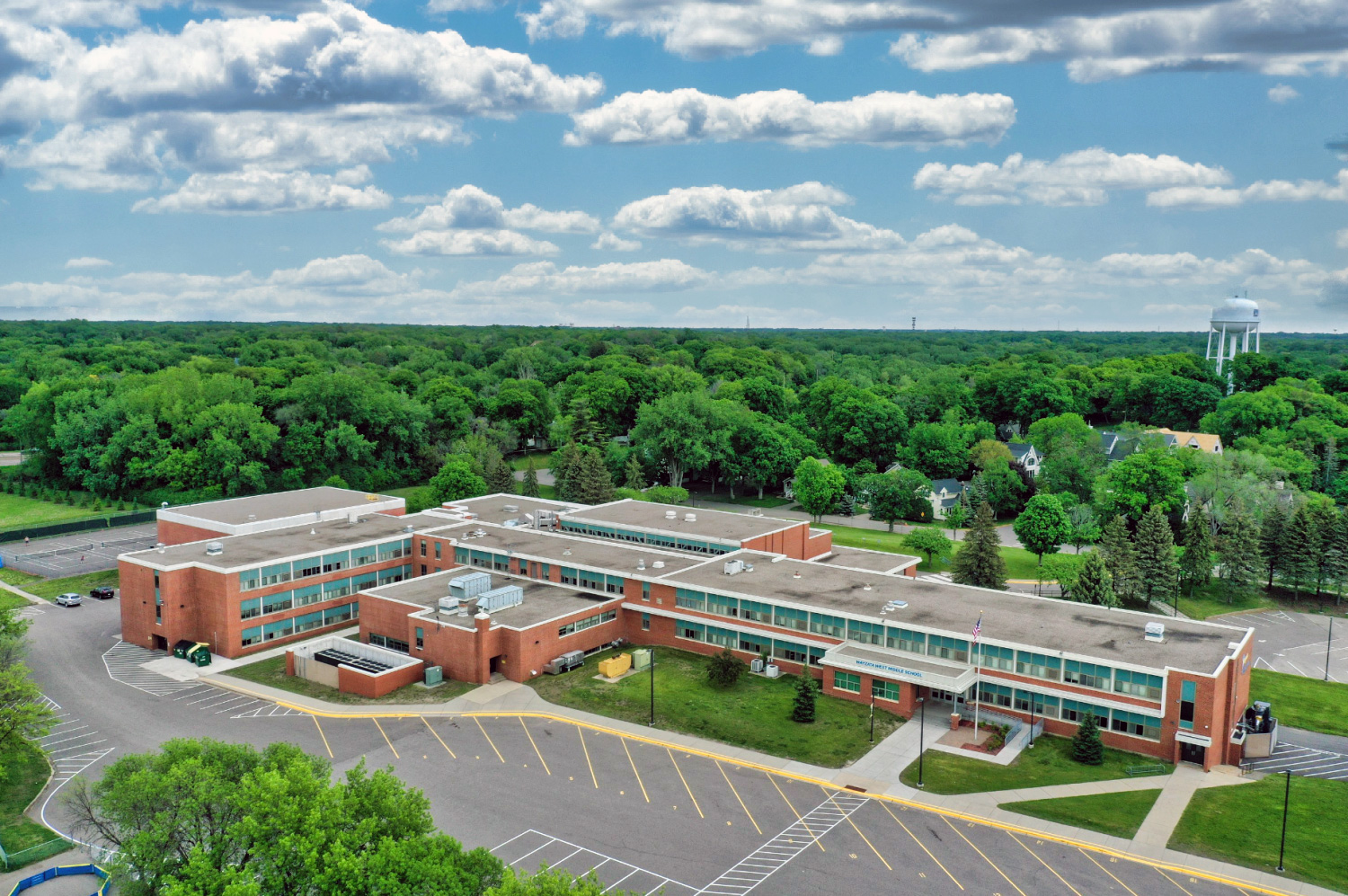Summertime is commercial flat roof season for schools. With classrooms empty and hallways quiet, it’s the perfect opportunity for school administrators and facility managers to tackle major maintenance projects.
Roof replacement is one of school administrators’ most critical summer tasks. But why is summer the ideal time to replace school roofs?
Let’s explore the many advantages and challenges and offer practical tips for a successful project.
Advantages of Summer Roof Replacements for Public Schools
Minimal Disruption to Academic Activities
One primary benefit of scheduling roof replacements during the summer is that they minimize disruption to academic activities.
With students and teachers on break, contractors can work without worrying about interfering with classes or exams.
This ensures that the learning environment remains undisturbed and the school year can commence on schedule with a new roof.
Favorable Weather Conditions for Roofing Work
Summer offers the most favorable weather conditions for roofing work. Warm temperatures and longer daylight hours allow contractors to complete projects more efficiently.
There’s also a lower risk of weather-related delays, such as rain or snow, which can significantly extend the timeline of a roofing project.
Easier Access to the Building and Surrounding Areas
During the summer break, schools are typically less occupied, making it easier for contractors to access the building and surrounding areas.
This speeds up the roofing process and ensures that safety protocols are more straightforward to implement.
Without the daily hustle and bustle of students and staff, contractors can work more freely and efficiently.
Opportunity to Coordinate with Other Maintenance Projects
Summer is also an excellent time to coordinate roof replacement with other maintenance projects.
Whether upgrading HVAC systems or repainting classrooms, having multiple projects occurring simultaneously can be more cost-effective and less disruptive in the long run.
This holistic approach ensures that all essential maintenance tasks are addressed before the new academic year begins.
Challenges to Consider
Tight Timeline Between Academic Years
One significant challenge is the tight timeline between academic years. Schools typically have a limited window to complete major projects, and any delays could extend into the school year, causing disruptions.
Effective planning and scheduling ensure the roof replacement is completed on time.
Potential Conflicts with Summer Programs or Activities
Many schools host summer programs, camps, or activities that can conflict with roofing projects. Coordinating with program managers to minimize disruptions and ensure safety is essential.
Clear communication and scheduling can mitigate these conflicts and ensure that the roofing project and summer activities proceed smoothly.
Higher Demand for Roofing Services During Peak Season
Summer is the peak season for roofing services, meaning contractors are in high demand. This can make securing a reputable contractor at a reasonable price more challenging.
Early planning and booking can help mitigate this issue, ensuring that your project is prioritized.
Possible Budget Constraints at the End of the Fiscal Year
Budget constraints can also pose a challenge, especially if the project needs to be completed at the end of the fiscal year. Schools must carefully plan and allocate funds for roof replacement while balancing other financial obligations.
Effective budgeting and financial planning are essential to ensure the project can proceed without financial strain.
Planning for Success
Early Assessment and Budgeting
Early assessment and budgeting are critical for a successful roof replacement project. Conducting a thorough roof inspection well in advance can help identify potential issues and allow for accurate budgeting.
This proactive approach ensures that all necessary resources are allocated without financial surprises.
Choosing the Right Roofing System for Long-Term Durability
Selecting the right roofing system is crucial for long-term durability. When choosing a roofing system, consider factors such as climate, building structure, and maintenance requirements.
Investing in a high-quality, durable roof can save money in the long run by reducing repair and maintenance costs.
Coordinating with School Administration and Facilities Management
Effective coordination with school administration and facilities management is essential for a smooth project.
Regular meetings and clear communication can ensure that all stakeholders are aligned and that any issues are promptly addressed.
A collaborative approach can help streamline the project and prevent misunderstandings.
Developing a Detailed Project Timeline
A detailed project timeline is vital for keeping the project on track. This timeline should outline all key milestones, deadlines, and responsibilities.
Regular progress reviews and adjustments can ensure the project stays on schedule and mitigate potential delays.
Maximizing Long-Term Benefits
Implementing Preventative Maintenance Programs
Implementing preventative maintenance programs can significantly extend the lifespan of the new roof. Regular inspections and maintenance can identify and address minor issues before they become significant problems.
This proactive approach ensures that the roof remains in optimal condition for years to come.
Enhancing Energy Efficiency with Modern Roofing Materials
Modern roofing materials can enhance energy efficiency, leading to significant cost savings. Consider materials that offer better insulation, reflectivity, and durability.
These materials can help reduce energy consumption, lower utility bills, and create a more comfortable learning environment.
Addressing Underlying Structural Issues During Replacement
Roof replacement provides an opportunity to address any underlying structural issues. Conducting a thorough inspection and making necessary repairs can ensure the building’s integrity and safety.
This holistic approach ensures that the new roof is built on a solid foundation, providing security and protection for the school community.
Improving Overall Building Safety and Comfort
A new roof can improve the building’s overall safety and comfort. The new roof can create a safer and more comfortable environment for students and staff by addressing issues such as leaks, poor insulation, and structural weaknesses.
This can enhance the overall learning experience and contribute to the school’s success.
Partnering with an Experienced Commercial Roofing Contractor
Importance of Expertise in Educational Facility Projects
Partnering with an experienced commercial roofing contractor is crucial for a successful project.
Contractors with expertise in educational facility projects understand school environments’ unique challenges and requirements.
Their experience can ensure that the project is completed efficiently and to the highest standards.
Benefits of Comprehensive Roof Inspections and Analysis
Comprehensive roof inspections and analysis are essential for identifying potential issues and ensuring the project’s success.
An experienced contractor can conduct thorough inspections and provide detailed reports and recommendations.
This proactive approach ensures that all aspects of the project are addressed.
Value of Ongoing Maintenance Services
Ongoing maintenance services can extend the new roof’s lifespan and ensure optimal performance.
Partnering with a contractor that offers maintenance services can provide peace of mind and protect the investment.
Regular maintenance can identify and address minor issues before they become major problems.
Ensuring Compliance with Local Building Codes and Regulations
Compliance with local building codes and regulations is essential for any roofing project.
An experienced contractor understands these requirements and can ensure that the project complies with all relevant codes and regulations, ensuring that the project is completed safely and legally.
Case Study: Successful School Roof Replacement
Overview of a Recent Project
Let’s look at a hypothetical example of a successful school roof replacement project. A private school in a suburb of Minneapoois faced significant roof damage and needed a complete replacement. To minimize disruptions, the project was scheduled for the summer break.
Challenges Faced and Solutions Implemented
The project faced several challenges, including a tight timeline and budget constraints. The contractor conducted a thorough assessment and developed a detailed project plan.
By coordinating with school administration and implementing efficient project management practices, the project was completed on time and within budget.
Results and Benefits for the School
The new roof improved the school’s energy efficiency, enhanced safety, and created a more comfortable learning environment.
The project also addressed underlying structural issues, ensuring the building’s integrity.
The school now enjoys long-term cost savings and a high-quality roof that will last for years to come.
Investing in the Future of Education
Long-Term Cost Savings Through Quality Roof Replacement
Investing in a quality roof replacement can lead to long-term cost savings.
Schools can reduce repair and maintenance costs by choosing the best roofing materials, using a commercial roofing contractor with experience installing and replacing school roofs, and implementing preventative maintenance programs.
This investment pays off in the long run, ensuring the roof’s longevity and performance.
Creating a Better Learning Environment for Students and Staff
A new roof can create a better learning environment for students and staff. It improves insulation, addresses leaks, and enhances safety, contributing to a more comfortable and conducive learning space.
This can positively impact student performance and overall school success.
Protecting Valuable School Assets for Years to Come
A high-quality roof protects valuable school assets for years to come. By addressing underlying structural issues and implementing ongoing maintenance, schools can ensure the building’s integrity and longevity.
This investment protects the school’s infrastructure and resources, safeguarding its future and creating a predictable budget forecast for 15 to 20 years or more.
In conclusion, summer is the ideal time for school roof replacements. Schools can complete roof replacement projects and enjoy long-term benefits by planning, coordinating with stakeholders, and partnering with experienced contractors.
Investing in a quality roof saves money and creates a safer, more comfortable learning environment for students and staff. Take the first step towards a better future for your school by planning your summer roof replacement project today.
Mint Roofing: The #1 Choice for Minnesota Schools
Mint Roofing has been installing, replacing, and maintaining school roofs on public and private schools and colleges for 75 years. That proven track record of excellence makes us the top choice for Minnesota schools. Our expert team brings extensive experience, in-depth knowledge, and a commitment to quality on every project.
Now is also the time to start planning your school’s roof replacement for the Summer of 2025. Be prepared for budget meetings by getting in front of the process today.
Contact Mint Roofing today to start creating a safer, more comfortable learning environment for your school. Invest in the future of education with Mint Roofing, where quality and expertise meet to bring you the best results.
Invest in the future of your commercial property by choosing Mint Roofing as your trusted roofing partner. Contact us now and let us exceed your expectations with our exceptional service and expertise.
Phone: 952-473-808024-Hour Line: 952-473-8181Email: info@mintroofing.comFAQs
Q: What are the signs that a school roof needs replacement?
A: Common signs a school roof may need replacement include visible leaks, sagging areas, missing or damaged shingles, and excessive granule loss. Water stains on ceilings or walls also suggest underlying issues.
Q: How often should schools conduct roof inspections?
A: It is recommended that schools conduct roof inspections at least twice a year, ideally in the spring and fall. Additional inspections should be done after severe weather events to assess any damage that may have occurred.
Q: What factors should be considered when choosing roofing materials for schools?
A: When selecting roofing materials for schools, consider durability, energy efficiency, maintenance requirements, and the local climate. It is also important to evaluate the material’s longevity and performance in various weather conditions.
Q: How can ongoing roof maintenance benefit schools?
A: Ongoing roof maintenance helps identify and address minor issues before they escalate into major problems, extending the roof’s lifespan and ensuring optimal performance. Regular maintenance can save costs by reducing the need for significant repairs.
Q: What role do building codes play in school roofing projects?
A: Building codes set standards for construction and safety that must be adhered to during roofing projects. They ensure that the materials used and the installation methods meet specific durability and safety criteria, ultimately protecting the school community.



